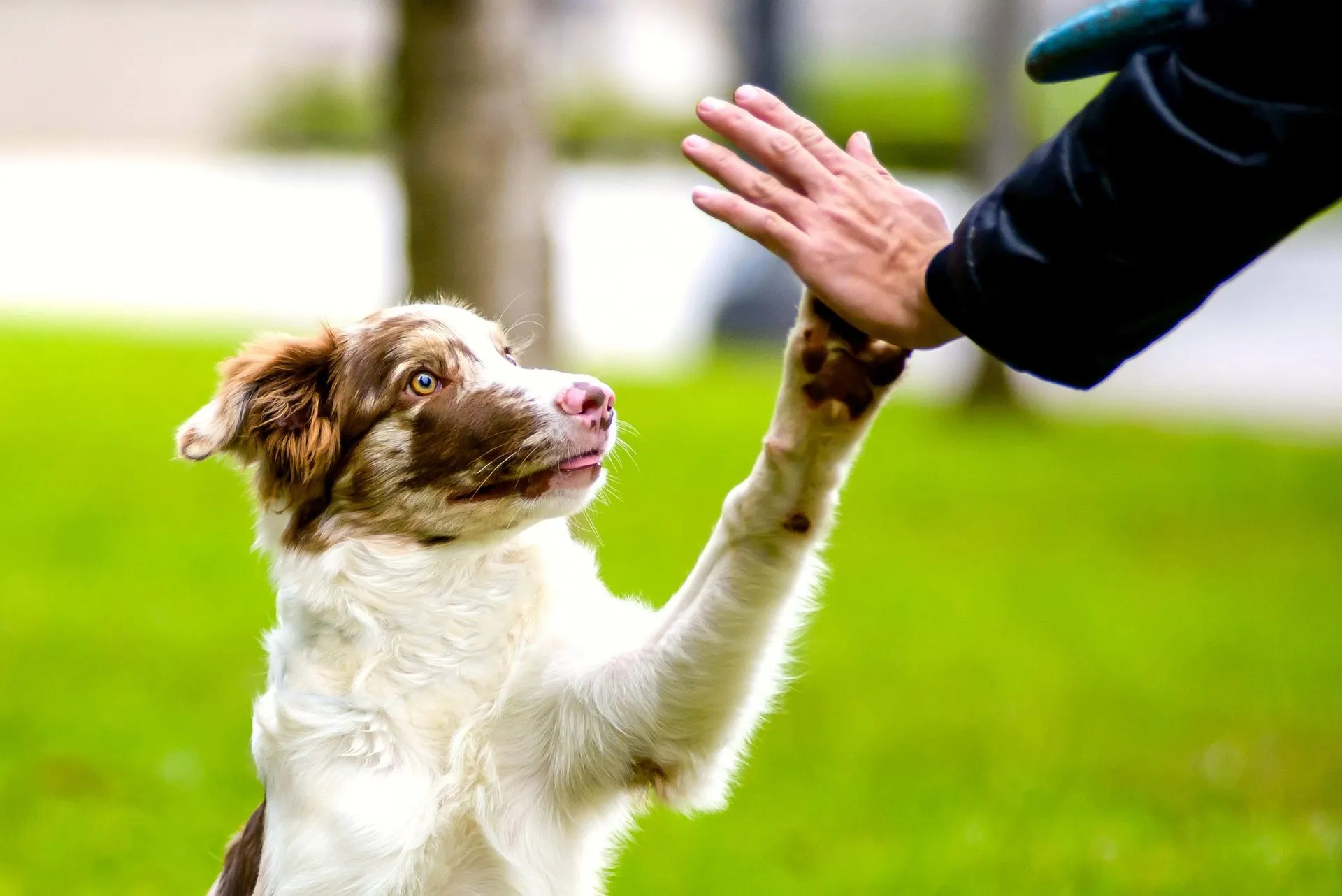Many dog owners reach out to us at Dog Care Story with specific behavioral challenges – perhaps a persistent barker at the door, a restless puppy at night, or a dog that pulls excessively on the leash. These are common issues that require dedicated training and patience. However, sometimes, the goal isn’t to fix a problem, but to enrich the bond and engage a dog’s intelligence in a different way.
Consider the query from a reader, KT, who has a well-behaved two-year-old Springer Spaniel and simply wishes to Teach A Dog A New Trick – something fun to entertain visitors. While the desire to engage your dog in enjoyable activities is commendable, it’s crucial to approach trick training with the right mindset and priorities. Our expert advice emphasizes two key warnings: ensure all basic obedience training is firmly in place, and always treat your dog with respect. Tricks should be a mutually enjoyable activity, not a performance on demand for others’ amusement. Just as you wouldn’t expect children to perform on command, extend the same courtesy to your canine companion.
 Owner attempting to teach a dog a complex trick before mastering basics
Owner attempting to teach a dog a complex trick before mastering basics
With these fundamental principles in mind, let’s explore how to effectively and ethically teach a dog a new trick, ensuring a positive and rewarding experience for both you and your pet.
The Indispensable Foundation: Why Basics Come First
Before you even consider introducing fancy new tricks, it is paramount that your dog has a solid grasp of fundamental obedience commands. Think of basic training as the bedrock upon which all other learning is built. A perfectly well-mannered dog, one that consistently responds to commands like “sit,” “stay,” “come,” and “leave it,” is a prerequisite for advanced trick training.
We once encountered a dog whose owner had painstakingly taught it to “play dead” when she made a “shooting” gesture with her fingers. This party trick was incredibly impressive, with the dog even waving a paw in mock death throes. However, the same dog would not sit, stay, or walk politely on a leash. All the owner’s efforts had been funneled into a single, performative stunt, neglecting the essential life skills that ensure a dog’s safety and well-being. Without a strong foundation in basic obedience, complex tricks become mere circus acts, often achieved through excessive rewards rather than genuine understanding and control. Prioritizing core commands not only makes your dog a better companion but also makes teaching new tricks much easier in the long run.
Redefining “Impressive”: Basic Obedience as Ultimate Tricks
What truly impresses people? Is it a dog that can high-five, or one that calmly waits for permission to eat its meal, even when delicious food is right in front of them? Is it a dog that barks incessantly at the postman, or one that merely raises an eyebrow, acknowledging the visitor without creating a disturbance? The mastery of foundational behaviors like a perfect “leave it” command or walking politely to heel are astonishing feats of canine intelligence and handler dedication in themselves.
These “basic” commands require immense self-control and focus from your dog, and consistent, clear communication from you. When your dog reliably performs these life-saving and household-harmonizing skills, it demonstrates a deep level of understanding and respect between you. These aren’t just commands; they are a sophisticated language that allows your dog to navigate the human world confidently and safely. Seeing a dog exhibit such impressive self-control and responsiveness often sparks more admiration than any flashy, one-off trick.
Engaging Their Minds: The Power of Scent and Memory Games
Beyond traditional obedience and performance tricks, some of the most enjoyable and mentally stimulating activities for your dog involve engaging their natural instincts. Memory retrieve games are a fantastic way to do this. Take some of your dog’s favorite toys – a ball, a chew, or a soft teddy – and hide them around the house, in the garden, or even during a walk in a safe, designated area. Then, challenge your dog to track them down.
This type of game is not only superb fun but also excellent mental exercise. It fires up their minds, hones their incredible sense of smell, and builds their problem-solving skills as they search for the hidden items. Imagine the delight and amazement of your visitors when you ask your dog to “go find teddy,” and your dog trots off confidently to locate it. This kind of intelligent engagement often leaves a more lasting impression than a dog walking on its hind legs for a few steps. These games foster a deeper bond and demonstrate your dog’s cognitive abilities in a practical, enriching way.
The Truest Test of Skill: Mastering the Recall
When we talk about the “hardest tricks” to teach a dog a new trick, it’s rarely the flamboyant acts that come to mind. Instead, it’s often something as seemingly simple, yet profoundly challenging, as teaching a dog to re-engage with you and return when called. A dog that has spotted something enticing – whether it’s another dog, a squirrel, or a fascinating scent – and has taken off in full flight, is often completely consumed by its instincts. In that moment, the environment offers all the fun and enjoyment it could possibly want.
The ability to cut through that intense focus, to get through to your companion, and to have them reliably recall to your side, is truly exceptional. It demonstrates an unparalleled level of communication, trust, and training. This life command isn’t just a trick; it’s a vital safety skill that can prevent your dog from getting lost or encountering dangerous situations. Mastering recall is arguably the most impressive “trick” you can teach, showcasing your dog’s discipline and your training prowess at its highest level.
When to Introduce Fun: Ethical Trick Training
If you genuinely have all the essential life commands and basic obedience skills firmly established, and your dog clearly enjoys interacting and learning new things, then by all means, have some fun with trick training. Start with simple, classic tricks like “shake a paw” or “roll over.” These are excellent entry points that build confidence and reinforce positive associations with learning.
From there, you can explore a wide repertoire: perfecting “catch,” teaching your dog to crawl along on its tummy, playing hide-and-seek together, or even more complex sequences. The key is to ensure that both you and your dog are enjoying the process. When your dog is already beautifully trained in all the most important ways, you’ll likely find that adding new, enjoyable elements to their repertoire becomes surprisingly easy. For those looking for more specific guidance on diverse canine breeds, exploring resources on tricks to teach a Belgian Malinois can provide breed-specific insights and challenges, showcasing how advanced training builds on fundamental principles. Remember, the goal is enrichment and strengthening your bond, not coercion.
 Happy dog and owner enjoying playtime after successful training
Happy dog and owner enjoying playtime after successful training
Conclusion
Teaching your dog a new trick can be a highly rewarding experience, deepening your bond and engaging your dog’s intellect. However, the journey to impressive trick training must always begin with a strong foundation in basic obedience. Prioritizing life commands such as recall, sit, stay, and walking to heel not only ensures your dog’s safety and good behavior but also establishes the robust communication necessary for more advanced learning. Once these essentials are mastered, and with an emphasis on mutual enjoyment and respect, you can explore a world of fun and engaging tricks, from memory games to classic commands. At Dog Care Story, we believe that responsible, ethical training, built on a foundation of trust and understanding, leads to the happiest and most capable canine companions. Explore our website for more comprehensive guides and expert advice to continue your dog training journey.
